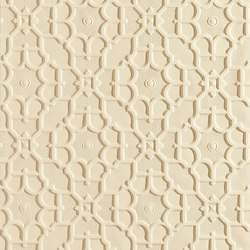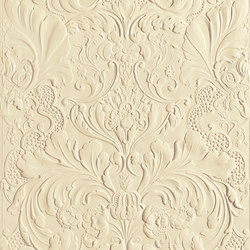Lincrusta: more than a wall covering
Brand story by Emma Moore
Lancaster, United Kingdom
28.04.22
Lincrusta's surface-covering products extend beyond those for walls, allowing interior designers to add flashes of pattern and texture to ceilings and other surfaces, too.
Lincrusta’s embossed wall coverings are often used creatively to introduce textural accents to a room. Here the ‘Elizabeth’ design is used on a headboard, before a two-tone paint effect is added
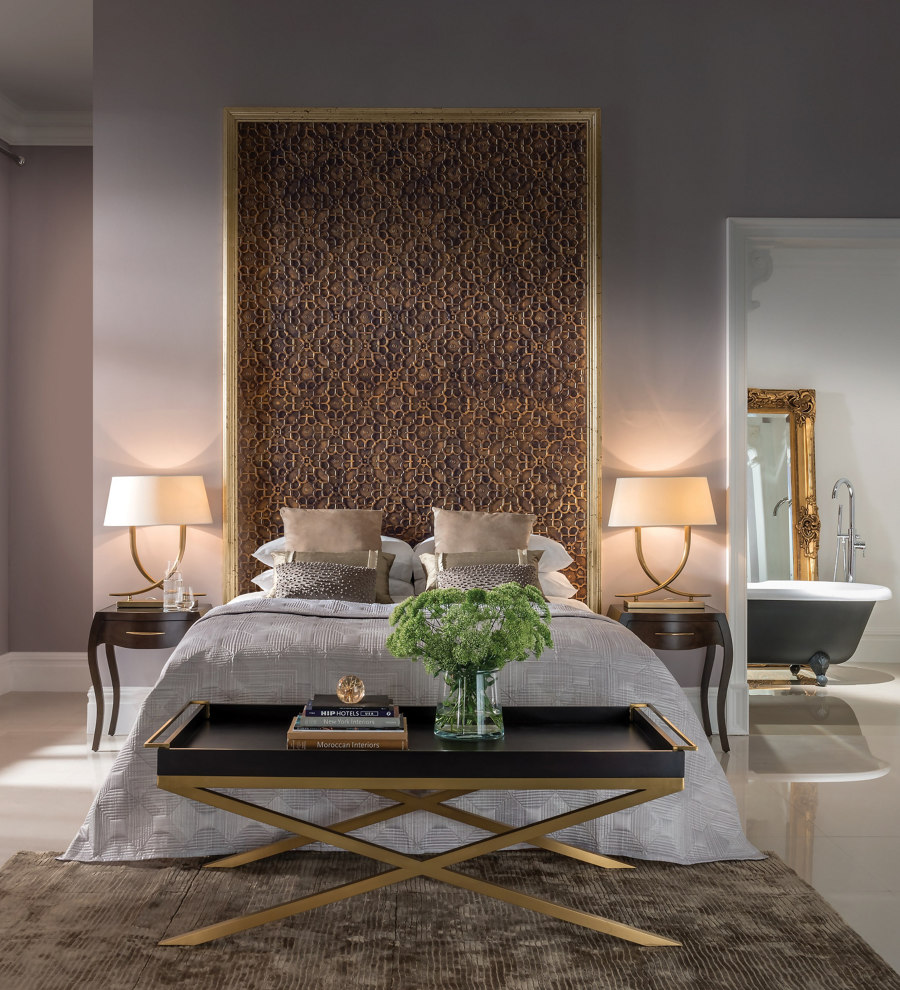
Lincrusta’s embossed wall coverings are often used creatively to introduce textural accents to a room. Here the ‘Elizabeth’ design is used on a headboard, before a two-tone paint effect is added
×Turning our gaze upwards
While interior walls are typically the place we find Lincrusta’s historical embossed coverings, increasingly it is being used to bring textural pattern to other surfaces, too. In the spirit of free-thinking that Lincrusta’s founder Frederick Walton brought to the invention of the linseed oil-based panels, interior professionals are finding new places to employ it as a textural accent.
The resurgence of tactility in our interiors is bringing back texture not only to our vertical walls but to the architectural fifth wall – or ceiling – too. Where once it might have been chosen to help disguise structural defects, it is now being seen as a lesser-exploited resource for creative expression. It’s an opportunity that wasn’t missed by William Morris, or more recently, by contemporary promoters of pattern House of Hackney.
Lincrusta can be used to bring a sense of opulence to bars such as with Art Nouveau at The Terrace Bar at the Crown Plaza, Edinburgh (top), and Kelmscott on the ceiling and Italian Renaissance on the walls of The Cadogan Arms, Chelsea
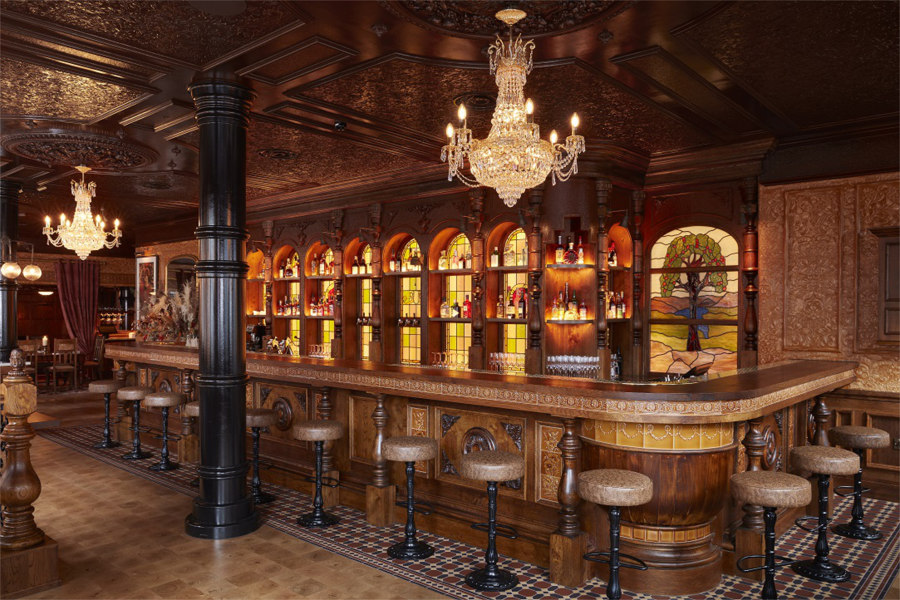
Lincrusta can be used to bring a sense of opulence to bars such as with Art Nouveau at The Terrace Bar at the Crown Plaza, Edinburgh (top), and Kelmscott on the ceiling and Italian Renaissance on the walls of The Cadogan Arms, Chelsea
×Textural accents
Where four or five walls of texture might be deemed overwhelming, Lincrusta is being used as a furnishing finish to bring flashes of pattern that are then layered throughout a room with other textures. At the Crowne Plaza in Edinburgh, for example, the bar’s vertical surfaces are enveloped in Lincrusta’s Art Nouveau design – painted a deeply pigmented green and overlaid with a metallic effect – and teamed with an elegant wooden top and brass foot rail. A headboard covered in Elizabeth brings warmth to a bedroom in a private residential project in London and even a cooker hood might be the surface of choice – this was the case in a Chicago residential interior by Hawthorn Development where Lincrusta’s Italian Renaissance design was applied and the surface treated to suggest aged metal.
The architectural ‘fifth wall’ – or ceiling – can be seen as an additional surface for creative expression. Here, at Bibi’s, Mayfair, Seagrass Matting is used and painted a rich shade of red
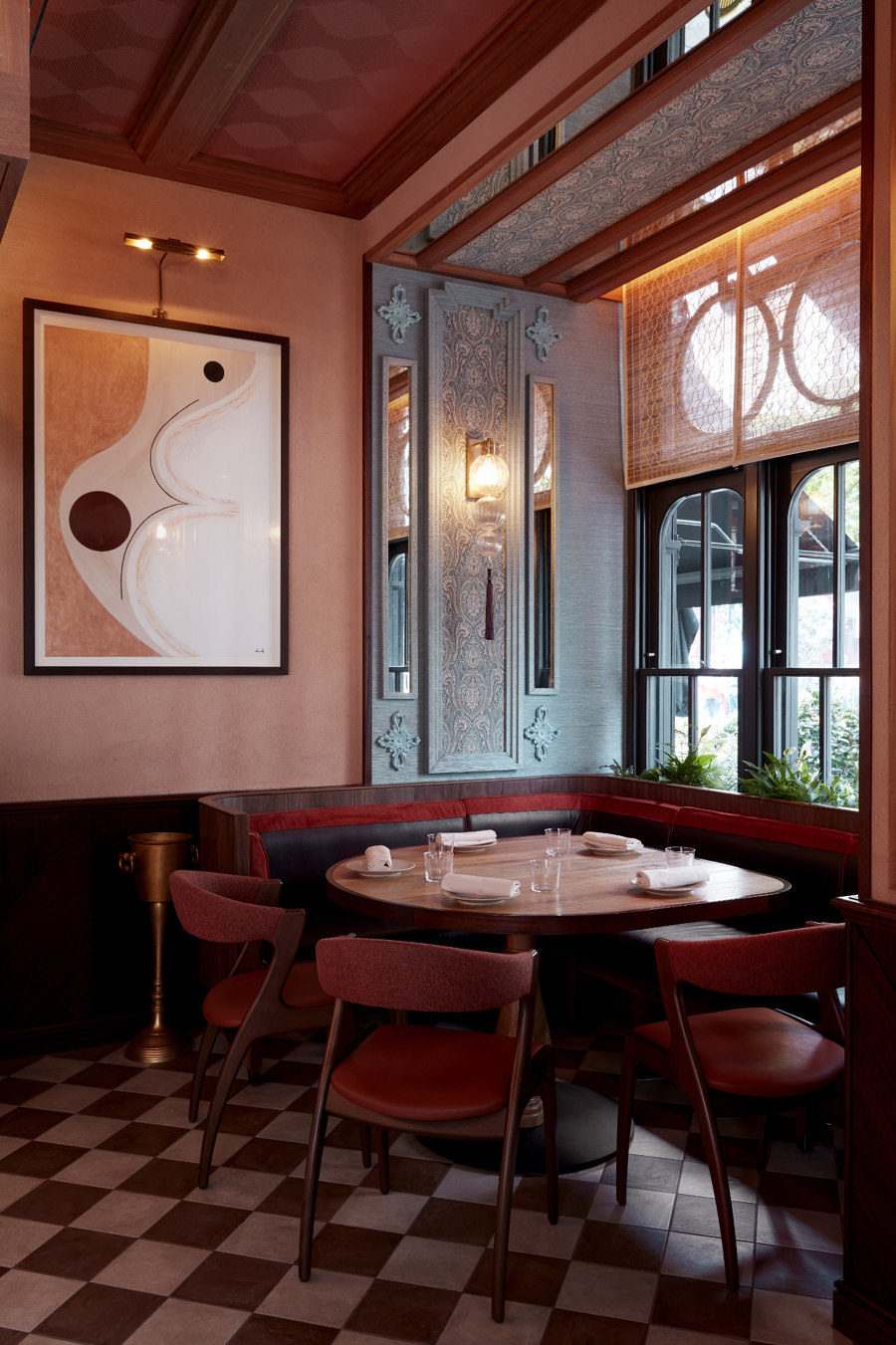
The architectural ‘fifth wall’ – or ceiling – can be seen as an additional surface for creative expression. Here, at Bibi’s, Mayfair, Seagrass Matting is used and painted a rich shade of red
×While once it might have been seen as an in-place-of product, Lincrusta is now firmly seen as a unique material in its own right, flexibly bringing texture and pattern to all manner of interior surfaces.
© Architonic


